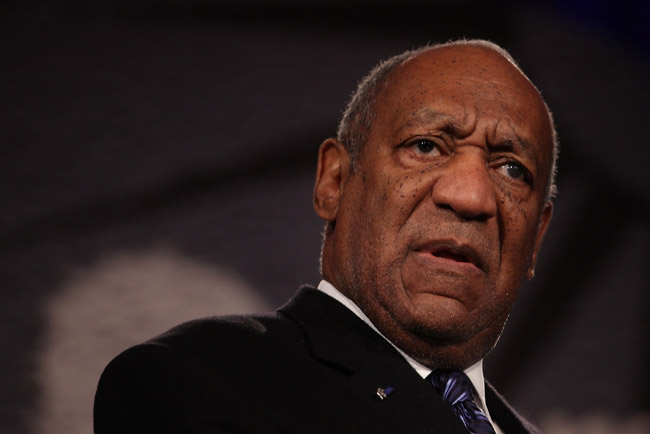
Ever since video of Hannibal Burress making jokes about the not-so-well-known accusations went viral, the media has been on fire for news about the rape allegations against Bill Cosby. Yet aside from more and more accounts of rape from reported victims, no documented evidence could be attributed to the famous comedian. At least, before the sealed 2005 deposition was released in July.
On July 6, the Associated Press reported that Cosby admitted during questioning to administering Quaaludes to young women for the purpose of having sex with them. It was the first time any kind of evidence, let alone a supposed admission, had leaked to the press. As a result, former Cosby defenders left his side, Disney World removed a bust of the comedian from an exhibit, and a White House petition called for his Presidential Medal of Freedom to be revoked.
Yet as horrible as all of this is, none of it compares a The New York Times story published on late Saturday, in which the paper got its hands on a copy of the deposition. If accurate, then the portrait painted of the once beloved stand-up comedian and television personality is about to make things a whole lot worse for him, his wife and manager Camille Cosby, and their team:
Even as Mr. Cosby denied he was a sexual predator who assaulted many women, he presented himself in the deposition as an unapologetic, cavalier playboy, someone who used a combination of fame, apparent concern and powerful sedatives in a calculated pursuit of young women — a profile at odds with the popular image he so long enjoyed, that of father figure and public moralist.
No, it’s not that bad. It’s actually much, much worse.

Early on in the article, the NYT’s Graham Bowley and Sydney Ember detail the story of an unnamed 19-year-old model “who sent him her poem and ended up on his sofa,” where “she pleasured him with lotion.” And remember, this is all from a deposition — an interrogation in which Cosby told investigators about these things, and in great, horrible detail:
He spoke with casual disregard about ending a relationship with another model so he could pursue other women. “Moving on,” was his phrase.
He suggested he was skilled in picking up the nonverbal cues that signal a woman’s consent.
“I think I’m a pretty decent reader of people and their emotions in these romantic sexual things, whatever you want to call them,” he said.
Through it all, his manner was largely one of casual indifference.
His tone here, need I remind you, is apparently best described as “one of casual indifference.” The man is well aware of what he was doing, and yet he didn’t really care about any or all of the possible implications of wrongdoing. That, or he wasn’t capable of recognizing them.
Probably the worst bit comes near the end of the article, in which Bowley and Ember recall the story of Beth Ferrier:
He could be dispassionate in recalling former relationships. With a woman named Beth Ferrier, a model he met in the 1980s, he recalled inquiring after her career and her father, who had died of cancer.
“Did you ask her those questions because you wanted to have sexual contact with her?” Ms. Troiani asked.
“Yes,” Mr. Cosby responded.
Still, he said he viewed himself as a good person, worthy of trust, and chivalrous in his desire to never tell others about the women with whom he had sex.
“I am a man, the only way you will hear about who I had sex with is from the person I had it with,” he said.
Obviously, that last part isn’t entirely true, as Cosby’s legal team has fought long and hard to keep many of the lawsuits and complaints filed against him quiet. Not even the women he allegedly raped were allowed to tell whether or not Cosby had had sex with them:
In the court case, 13 women came forward with anonymous sworn statements to support Ms. [Andrea] Constand, saying that they, too, had been molested in some way by Mr. Cosby. But they never had a chance to pursue their claims in court because, six months after the fourth and final day of his deposition, Mr. Cosby settled the case with Ms. Constand on undisclosed terms.
(Via The New York Times)
